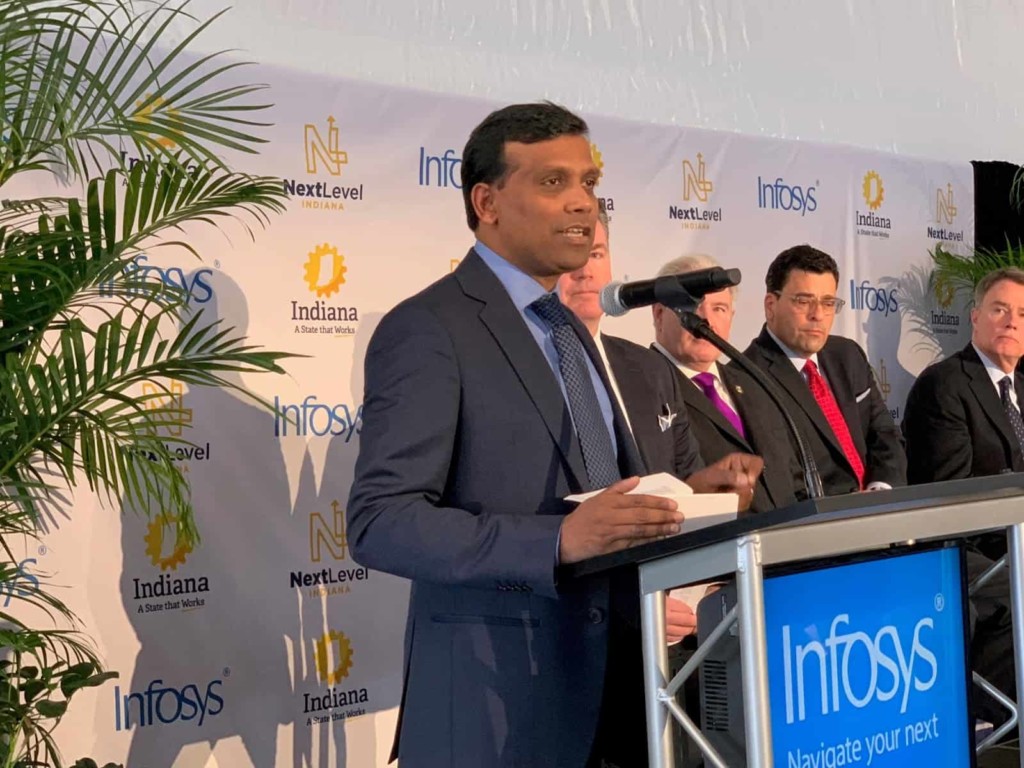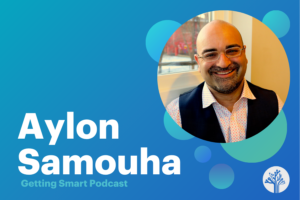How A Global Tech Giant Is Becoming A Learning Leader

After a degree in chemical engineering, Ravi Kumar’s first job was working on power sector reforms as a nuclear scientist in Orissa, India.
After a master’s in finance at Xavier (in eastern India), Kumar worked in consulting and technology. After selling CRM solutions across southeast Asia, Kumar joined Infosys in Hyderabad (in southern India) in 2002 as a senior vice-president.
In the fast-paced tech sector, “Diverse backgrounds like mine absolutely help,” said Kumar from his New York office.
Now president and chief delivery officer, Ravi Kumar is leading a giant talent development agenda that includes hiring and training 10,000 Americans.
Infosys is hiring beyond traditional STEM fields and recruiting at design schools and liberal arts colleges. “We have embraced liberal arts as part of digital workforce,” said Kumar.
Infosys runs one of the world’s largest training programs. Thousands of recent college graduates and new hires each year spend 8-12 weeks updating their skills in preparation to begin delivering value for clients.
Infosys Backstory. Founded in 1981 in Pune, India by seven engineers that scraped together $250, Infosys (INFY) has become a global leader in technology consulting and enterprise solutions.
With more than 225,000 employees globally, Infosys brought in revenues of $11 billion last year. The company went public in India in 1993 (1999 in the US) and is valued today at $43 billion (larger than Target or Ford).
“With an AI-powered core, digital agility at scale, Infosys is always learning,” said Kumar.
On the Future of Work. “AI and automation will take jobs of the past but create jobs of the future,” explained Kumar.
“The challenge is that societies, governments, academia, corporations, and schools have to come together to create more jobs of the future,” said Kumar.
On the mindset for the future, Kumar said, “Problem-solving will no longer be a virtue, problem finding will be a bigger asset.”
In governments and big companies, a few people will be involved in machine learning and artificial intelligence, said Kumar, “but the value is not as much in building the tools as the application of those technologies in people’s lives and how we make that happen.”
Growing Talent in America. InStep, the Infosys internships program, in its 20th year, is regarded by some as the best. Around 140 students come from 35 countries but predominantly the US. The paid internship engages young people in cutting edge projects.
After years of evangelizing a global delivery model, the Infosys leadership team concluded in 2017 that “in the digital age we needed workforce in closer proximity to clients, agile and with the cultural mindset to co-create with clients,” explained Kumar.
With a new commitment to a distributed global workforce, Infosys began developing a network of Technology and Innovation Hubs across the country beginning with Indianapolis, Hartford and Raleigh. A hub in Richardson, Texas will open soon and the Phoenix hub will open in the fall. A Design and Innovation Hub is also being developed in Providence, where Infosys also announced a partnership with the Rhode Island School of Design. And, the company recently broke ground in Indianapolis for a flagship U.S. Education Center—a state of the art training center. The 75 acre education campus will open in 2020.
“Our approach is designed to jumpstart regional ecosystems by localizing innovation bringing new technologies and invaluable Maker skills closer to where Americans live and work,” said Kumar.
Wingspan, the Infosys learning platform, powers internal training and enables client companies to take advantage of the open source, cloud-first and mobile-first learning solution.
Infosys is already three-quarters of the way to reaching the 10,000 American employee goal making it one of biggest on-campus recruiters– in liberal arts and design as well as STEM fields.
The company invests $20,000 in every undergrad they hire. Kumar believes the Infosys “finishing school” is part of the Infosys secret sauce. It’s what prepares recent graduates for production-grade work with 2,000 global clients.
With half of US students going to community colleges, Kumar sees them as key to building an inclusive workforce that few employers pay attention to.
On Talent Development. The pace of change means lifelong learning is a key value proposition. Kumar says Infosys tests for it in hiring, they call it learnability.
About 70% of the company’s digital needs are in-sourced, they develop internal talent. Infosys has 600 educators inside the company
“The person brings motivation, the company brings everything else,” said Kumar.
A set of personalized learning opportunities help internal candidates develop certification for service delivery.
Helping Teachers. “My passion is talent development, the future of work, and preparing teachers for a digital world,” said Kumar.
“The biggest gap today,” said Kumar, “is teachers are under-equipped for the future because there is no one telling them how to equip themselves.”
Infosys invited a group of K-12 teachers to visit the company for a week to experience a next generation working environment. Kumar thinks the change process must be experiential for teachers. He has seen the benefits when teacher learning is supported by professionals who have the aptitude to help. They plan to repeat teacher visits.
Kumar shifted the focus of the Infosys Foundation to Computer Science. To date, almost five million students in 21,000 schools across America have benefited from training and equipment funded by the foundation.
Infosys is hiring people committed to lifelong learning–and to helping teachers instill a love of learning in young people.
For more, see:
- The Future is Here: Artificial Intelligence and What it Means For Our Kids
- Envisioning the Future of Education and Jobs
- Let’s Make Sure America Succeeds in the Age of Agility
This post is a part of the Getting Smart Future of Work Campaign. The future of work will bring new challenges and cause us to shift how we think about jobs and employability — so what does this mean for teaching and learning? In our exploration of the #FutureOfWork, sponsored by eduInnovation and powered by Getting Smart, we dive into what’s happening, what’s coming and how schools might prepare. For more, follow #futureofwork and visit our Future of Work page.
Stay in-the-know with innovations in learning by signing up for the weekly Smart Update.
This post was originally published on Forbes.







0 Comments
Leave a Comment
Your email address will not be published. All fields are required.